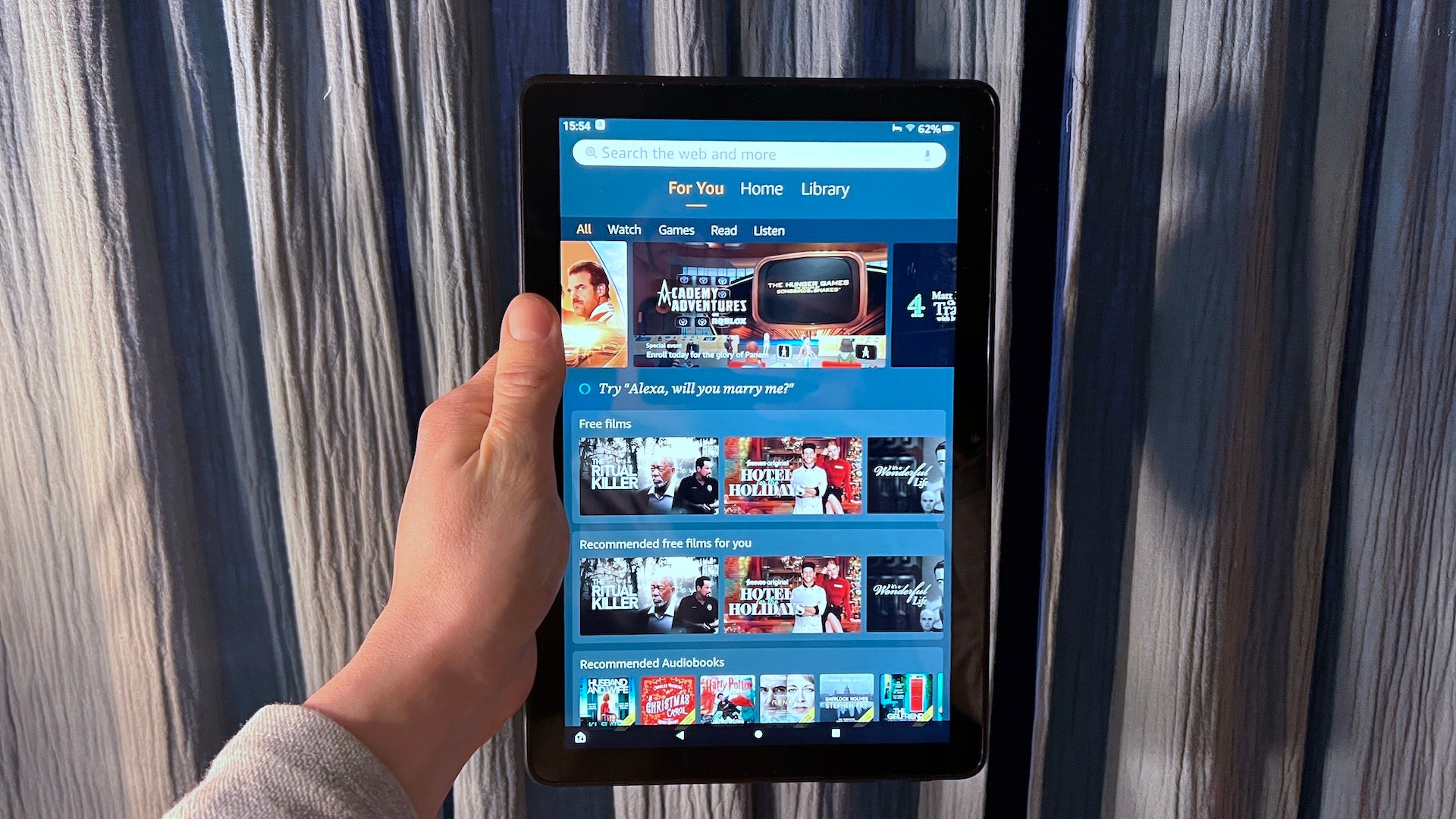Huawei MatePad 11.5 PaperMatte Edition Review
A unique spin on tablet screen tech helps the PaperMatte stand out from the crowd.
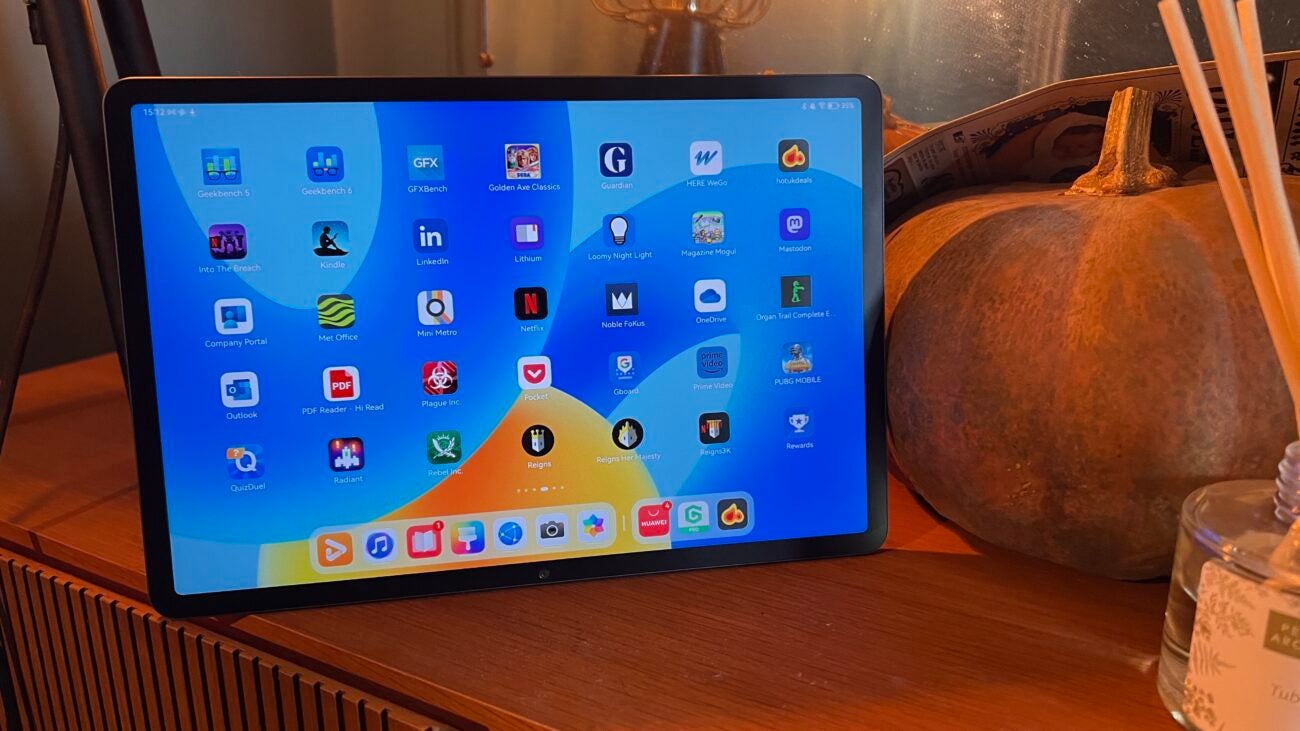


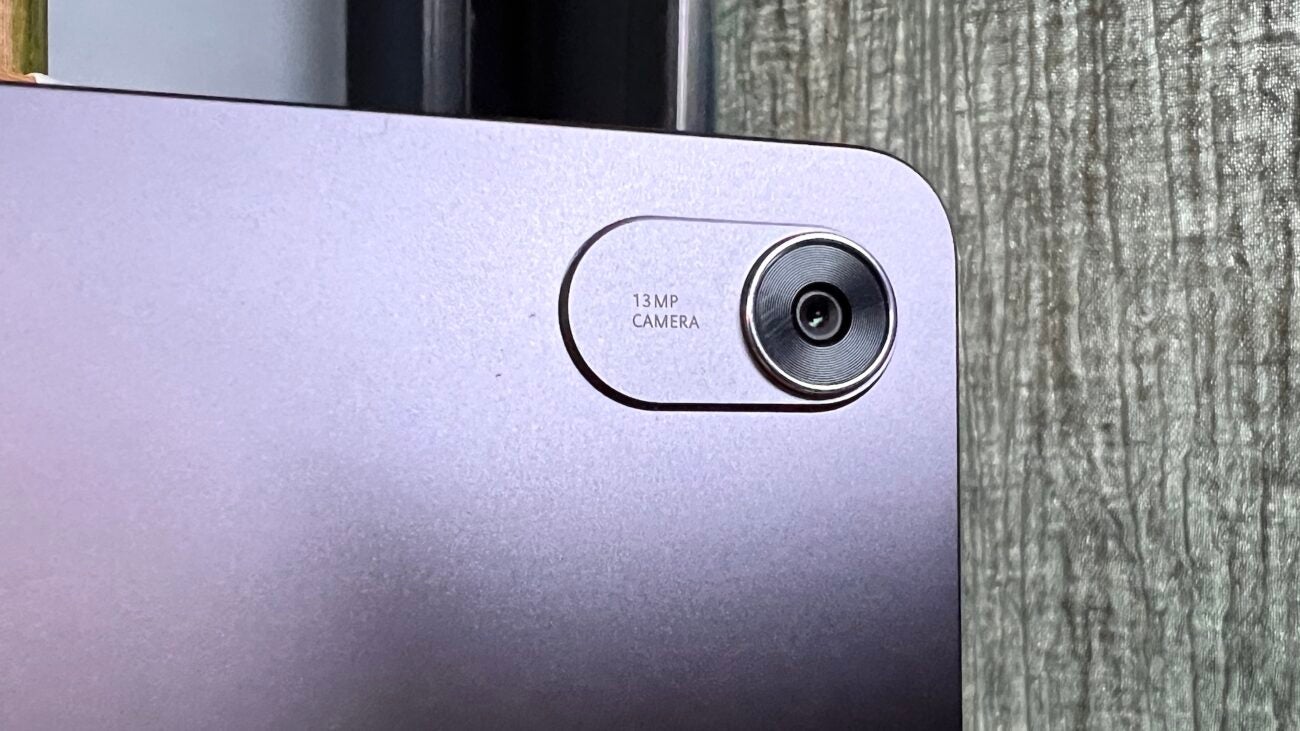
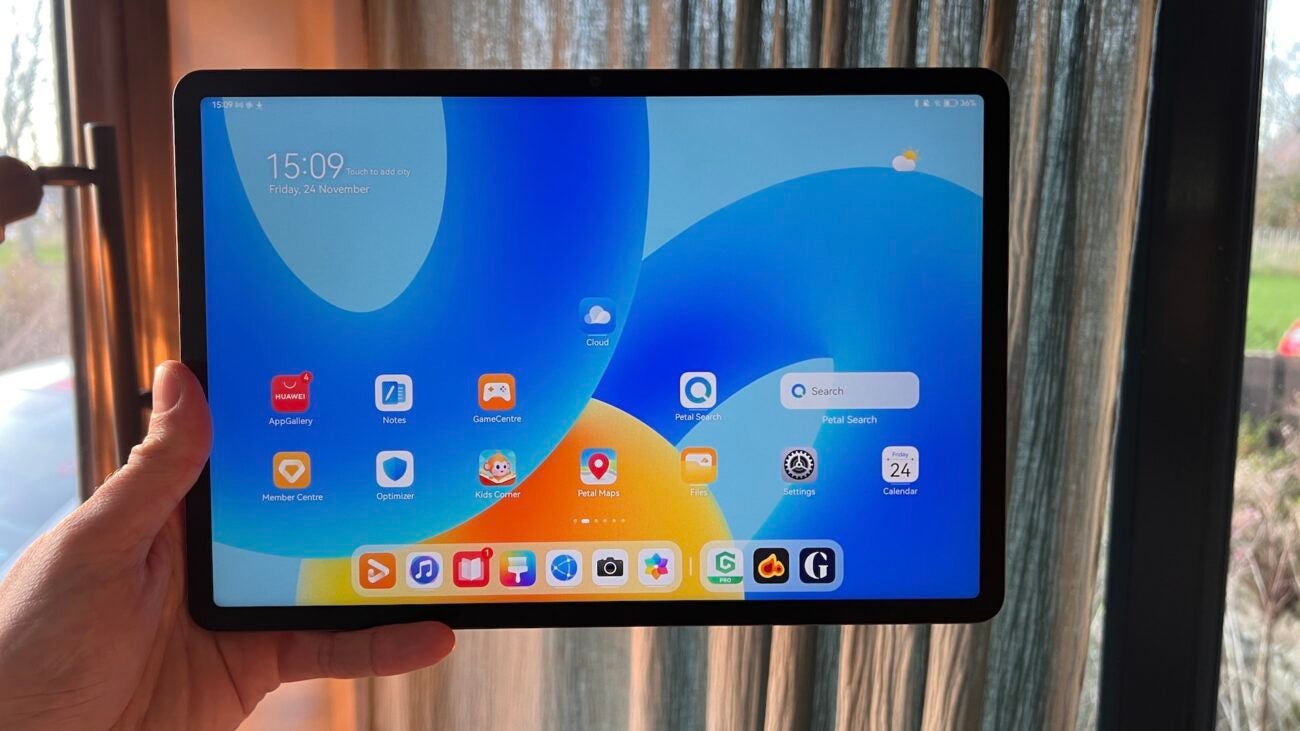
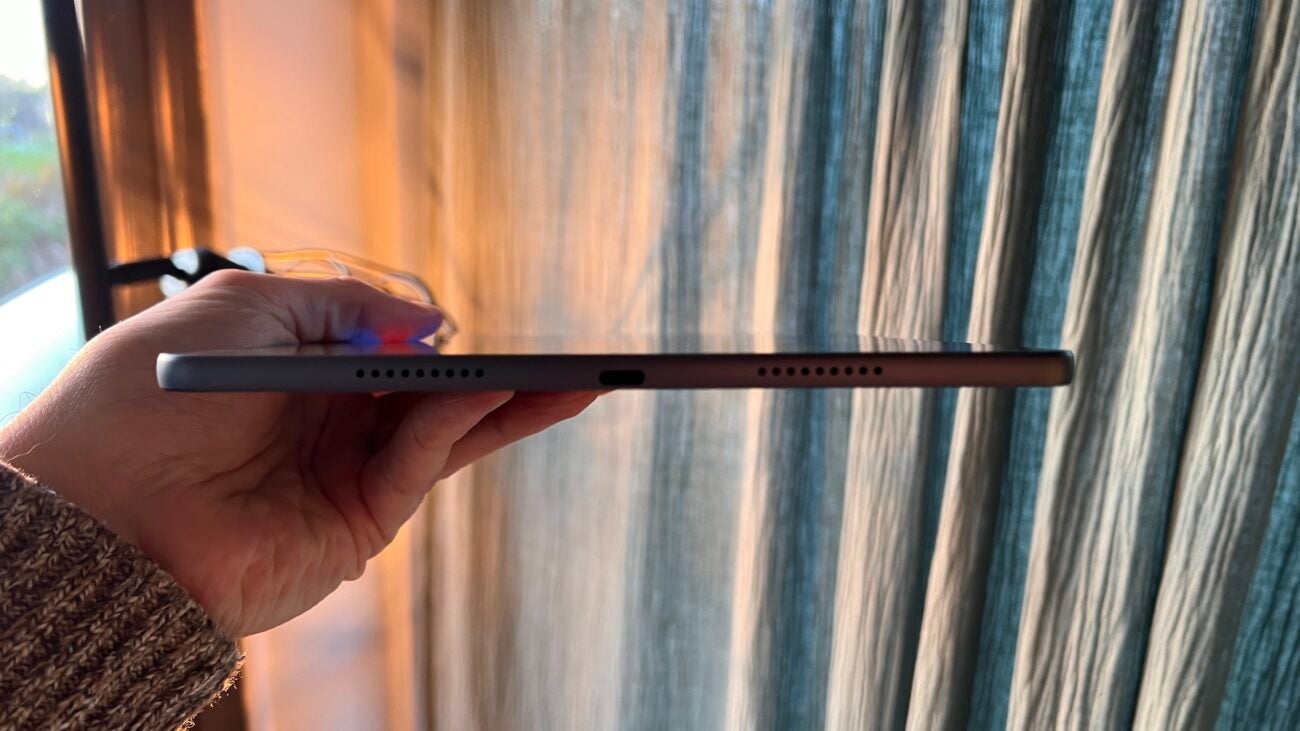
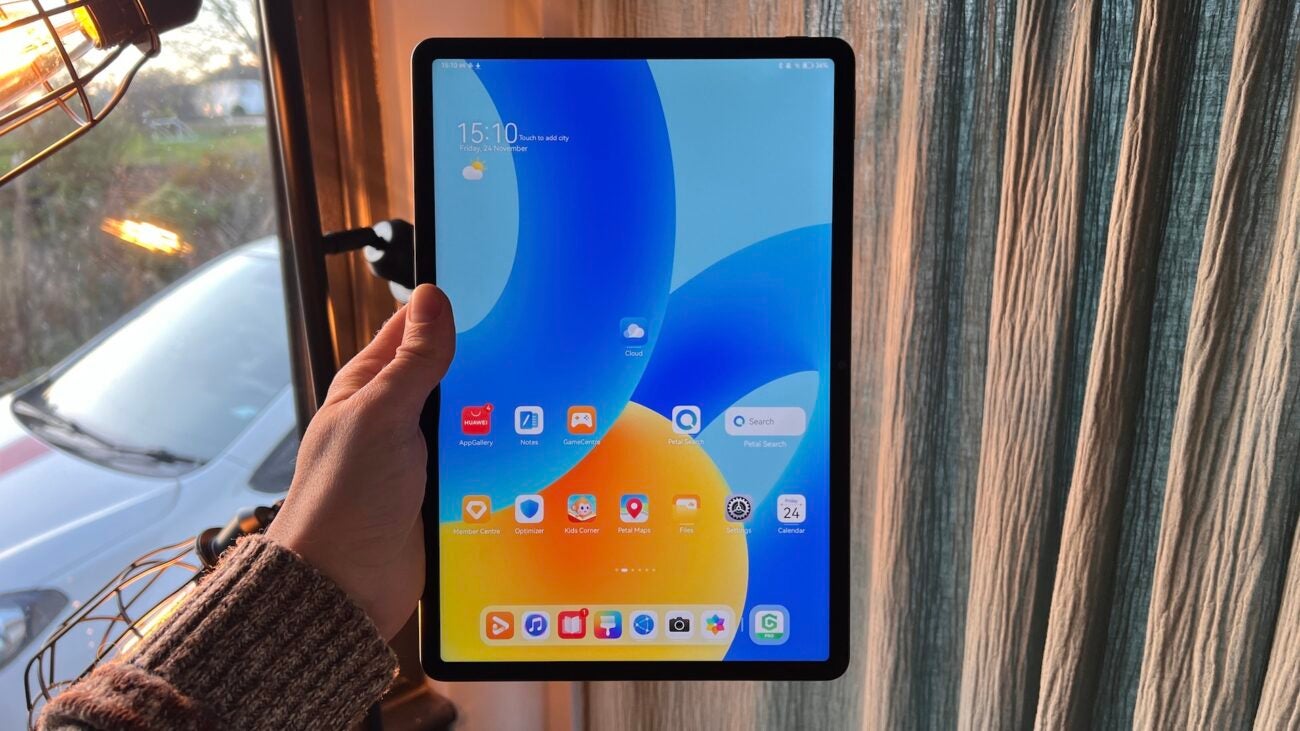
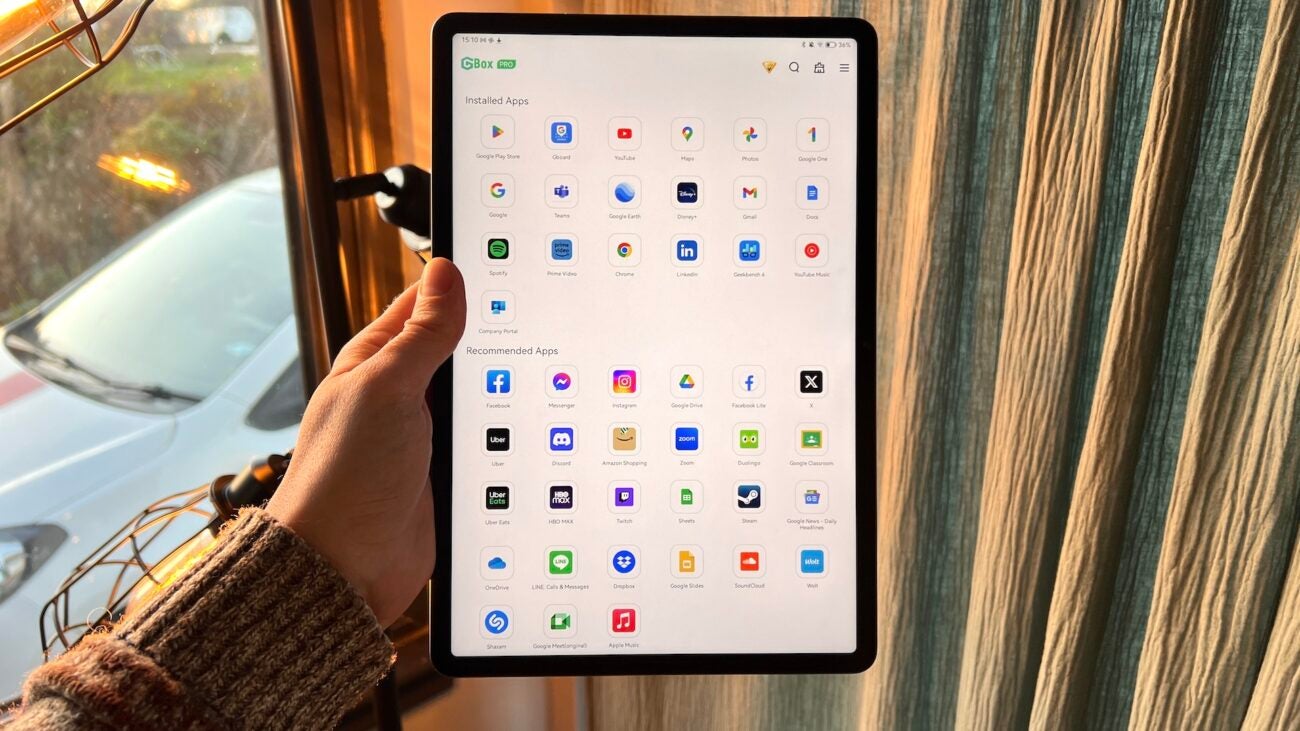




Verdict
The Huawei MatePad 11.5 PaperMatte is a device constructed around one feature – a specially etched screen that promises to reduce eye strain. It does precisely that, which makes it almost unlike anything else on the market. However, with no access to the Google Play Store, its successes are outweighed by its major weakness; that the competition can do more at a lower price point.
Pros
- Etching reduces eye strain from the screen
- Mostly snappy performance
- Loud quad speakers
Cons
- Takes time to set up properly
- No access to Google apps
- Lack of compatibility with common work apps
Key Features
- Special anti-glare etching technologyThe etching on the PaperMatte’s display makes it easier on the eyes than nearly any other tablet at the price point.
- Lightweight designMeasuring in at 499g and just 6.85mm thick, the MatePad 11.5 PaperMatte is comfortable to use and easy to transport.
- E-reader display modeThe etching technology, combined with a special monochromatic display mode, make for a great e-reader experience.
Introduction
At this point in 2023, it is hard for a tablet to stand out from the crowd. Compared to previous years, there’s a glut of options available at all price points and from a host of manufacturers, all trying something a little different to make their mark.
Huawei, in particular, has to work a little harder than most. Although it has brand name recognition and offers attractive price points for the most part, each of its devices comes sans the Google Play Store.
Any equivalent device sold at any price point by a competitor will then have something crucial that every Huawei product lacks – access to any and all Android apps.
Huawei was cut off from Android years ago, a move that still reverberates today. The burden is then on the hardware of each device, on design, looks and more to soften the blow. With the MatePad Papermatte, its latest premium tablet, Huawei focuses primarily on the screen and readability.
Whether that is quite enough to justify a purchase over other Android tablets is another matter. Does it hit the mark? Read on for the full review.
Design
- Flat display
- 6.85mm thick
- Weighs 499g
As it is a variant of the MatePad 11.5, it is no surprise that the Papermatte is identical in appearance. What that means is that it is a solidly designed, if unremarkable, device for the most part.
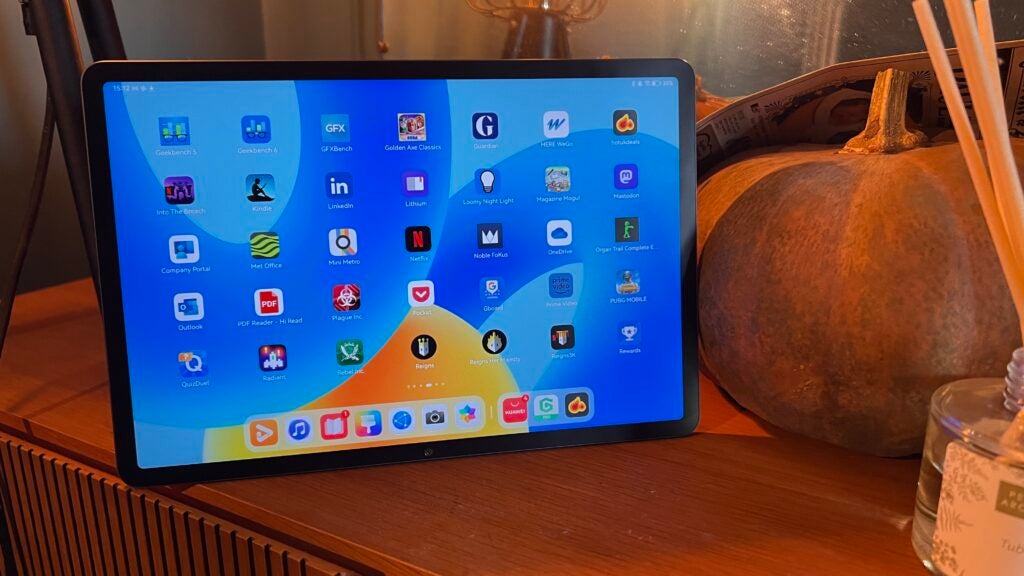
At 6.85mm, it is slim enough to use one-handed, a task that is made even easier by the relatively low weight of 499g. The single grey colourway available is not likely to set pulses racing, but it is unobtrusive and office-appropriate.
On the rear of the device is a single 13MP snapper, and around the sides there is a volume rocker and a power button. Found on the bottom is a set of pogo pins to attach a keyboard case should you wish to do so. There are four stereo speakers, no headphone jack and the device charges via USB-C. So far, so standard.
The whole tablet is constructed from aluminium, and feels as though it could take a slight knock if required, and with thin bezels, it looks modern enough.

It would have been nice to have seen other colour options and a headphone jack, but most will bemoan the lack of expandable storage or a SIM slot, which limits its travel potential. Others, such as the Nokia T21, offer a headphone jack and a SIM slot for £100 less than the price of the MatePad.
So you won’t hold the MatePad and be fooled into thinking it costs £200 more than the price of entry, but neither will you be overly disappointed. It is a grey tablet in a sea of grey tablets; design wasn’t a key focus.
Screen
- 2200 x 1440 IPS LCD display
- Special etching to reduce eye strain
- 120Hz refresh rate
With the display, we come to the key reason for the existence of the MatePad, for it has had a few changes to justify the higher outright cost. At 11.5 inches, it is the same size as the panel on its cheaper sibling, and it also shares a refresh rate of 120Hz and a resolution of 2.2K.

The difference lies in the surface glass. “Nano-level anti-glare etching technology” has been used (according to the marketing) to reduce eye strain and glare, with the goal of making the display almost E Ink-like in its ability to reduce eye fatigue.
So, does it work? In a word, mostly, which is to say that there is a noticeable difference in the texture of the glass, and it is easier on the eyes than some displays. Using it late at night, the reduced glare plus the minimised blue light make a big difference. If, like some, you are prone to migraines from prolonged screen use, elements like this make a fairly large difference.
Though there is an ‘e-reader’ mode that renders the display monochromatic, it isn’t as effective as a true e-reader. Which is to say, if you need an e-reader, buy one, but if you want a tablet that doubles as a e-reader that causes less eye strain, this is a good bet. It is particularly good for reading comics, which is touted as a key use case.

An unexpected benefit of the etching is the improved ‘smoothness’ of the glass, which means its tendency to avoid smudges and finger oils in general. This improves responsiveness and makes it especially suitable for gaming.
Beyond the etching, the screen gets bright enough to combat bright sunlight and dim enough to read easily in the dark without eye strain. Although it is an LCD panel, colour production is vibrant and strong, never going over the top with saturation but remaining appealing overall.
Refreshing at 120Hz by default, the panel is smooth in operation and at a quoted resolution of 2.2K, it is sharp enough for most purposes. For the price, the display is among the best you’ll find. None offer the same quality of life enhancements, even at the premium level.
Some get brighter, others offer increased vibrancy, but few, if not any, emphasise eye strain and readability in the same way. If you are in your twenties and have perfect eyesight, this may not matter hugely, but for anyone with light sensitivity or any related condition, it is a significant improvement.

Cameras
- 8MP selfie camera
- 13MP rear camera
- No LED flash on the rear
There isn’t a tablet on the market that prioritizes its camera. At most, they are an afterthought – included for scanning documents and moments of absolute desperation. Even a tablet retailing for upwards of £/$1000 will often have a snapper that is inferior in quality to a smartphone costing a quarter of the price.
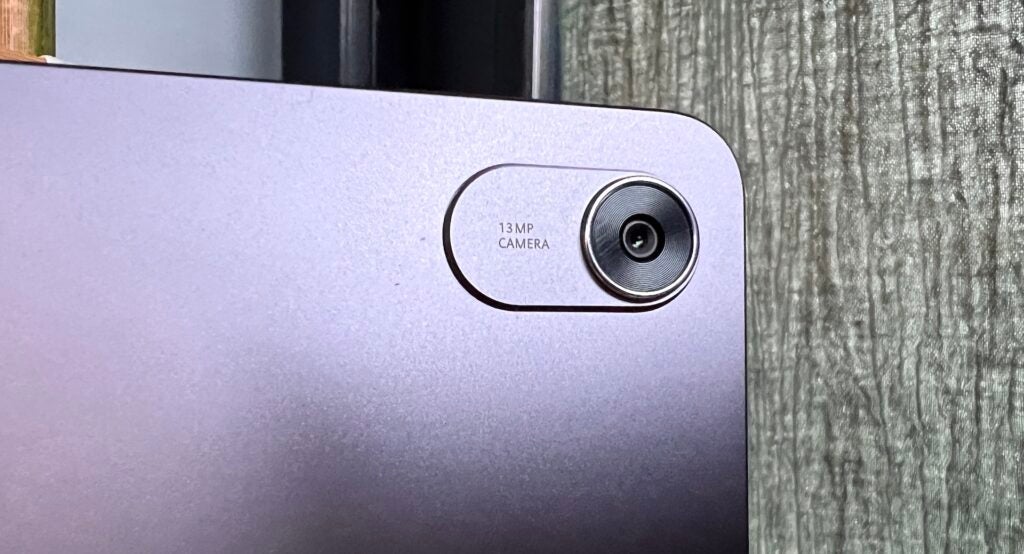
The PaperMatte does nothing to change this. It has a single 13MP f/1.8 sensor on the rear and an 8MP f/2.2 fixed-focus front camera. There’s no camera flash, and no claims as to the quality of the photos produced. This turns out to be a positive overall, as they are only average in quality, as is to be expected.
From the sensor on the rear, contrast is reasonable, there’s some detail present and little evidence of oversharpening – so far so good. Where it falls down is with dynamic range; a bright and overcast afternoon sky proved to be a step too far. In good lighting it won’t be an issue, but more challenging situations (such as a sunset) can be a problem.


Not that you’ll be using the PaperMatte this way – for document scanning it is absolutely sufficient.
There’s a lot less to say about the front-facing sensor, which is a shame given that this is likely what many people will use most. It washes colours out, has issues with dynamic range, and the low resolution means that detail is lacking.
One similarity across both sensors is the lack of a ‘night mode’ to improve performance in low-light scenarios. Consequently, results in these situations are nigh on unusable, a muddy mess.
Coming to video performance, results are also mixed. Footage from the rear is available up to 4K@30fps and showcases good resolution, low noise, decent saturation and reasonable dynamic range. Where things fall down is, once again, with the front-facing sensor. Capture here is capped at 1080p, and the frame rate is limited to 30fps, a specification from ten years ago.
Performance
- Snapdragon 7 Gen 1 processor
- 8GB of RAM
- 256GB of storage
In the mid-range, there are few tablets that put an absolute premium on performance. There are plenty that are thin and light, have lovely displays and great speakers, but which also have paltry RAM allocations and relatively anaemic processors.
Not so for the PaperMatte, with a Snapdragon 7 Gen 1 backed up by a healthy 8GB of RAM. Beginning with benchmarks, the results from Geekbench 6 show a tablet firmly in the middle when it comes to power, with a single-core score of 1035 and a multi-core score of 2878.
These aren’t necessarily representative of everyday use, but they are helpful in comparing it against the competition. So though it doesn’t meet the challenge of the Snapdragon 870 included in the likes of the Xiaomi Pad 6, the PaperMatte has enough power for everyday use.
Swiping through the interface and most general light tasks are no issue. When it comes to productivity, adding the Microsoft suite and getting it to play nicely was a challenge – and few challenging games were available. Due to a sign-in issue, PUBG couldn’t be launched even when installed from the AppGallery. It was possible to play Fortnite, however, which worked smoothly at lower settings.

The problem isn’t that the PaperMatte lacks power, but it lacks apps and access to apps that could take advantage of its processing punch.
Software
- Runs HarmonyOS 3.1
- Based on Android 12
- No access to Google apps
Where things fall down spectacularly, as with every Huawei device, is with software. Most will know it by now, but Huawei devices are barred from accessing the Google Play Store, meaning no easy access to most Android apps and certainly not those made by Google.

Huawei has tried to balance things out somewhat through the creation of its own software. This isn’t quite a new operating system as it likes to claim, but a fork of Android like that used by Amazon’s Fire OS. The key thing missing is the Google Services Framework, a backend piece of software that many Android apps use to verify the device they are run on, the absence of which can quickly become an issue.
There are a few services, such as MicroG and G Box that attempt to mitigate this with varying degrees of success, but none of them are wholly successful. G Box is the most useful, but we found that Google Drive and Docs, in addition to Chrome, were very temperamental and prone to sudden crashes.

Huawei has of course included two other options for accessing apps, the first being the AppGallery and the second being Petal Search. The former is stuffed to the gills with copies of popular apps that don’t work especially well, and the second allows you to search out APKs from across the web and install them. Petal Search in particular can throw up options that might be a security issue to install, so best be wary if you use it.
As for the interface itself, it is the classic Android layout a la Huawei, so there’s a grab bag of ideas taken from iOS and elsewhere bolted together. Generally it has nice animations, a fluid feel and it isn’t too hard to get a hold of what you are looking for, but what is annoying are Huawei’s own services such as Huawei Music and Huawei Video. These are there nakedly to make money from the user, and can be safely avoided.
If you want a simple tablet that is convenient to set up and use how you like it, the PaperMatte isn’t it. Any equivalent Android tablet or iPad at any price point has access to more and better apps. Should you be a more technically confident user you might not find it to be an issue, but on the whole, it is a significant sticking point.

Battery life
- 7,700mAh battery
- 18W fast charging
- Takes around 2.5 hours to fully charge
The MatePad PaperMatte, like its cheaper sibling, comes with a 7,700mAh battery. This isn’t the largest ever to be fitted to a tablet, however, given the size and the modern processor, it should be enough to provide acceptable battery life.
In real life, this mostly proves to be the case, though with the proviso that your usage likely might not be the same as on any equivalent tablet. With mostly general usage of watching videos and browsing the web on a given day, I was able to drain it to 50% with around 5 hours of use. This isn’t the most scientific measure, but puts it on an equal footing with the likes of the Xiaomi Pad 6.
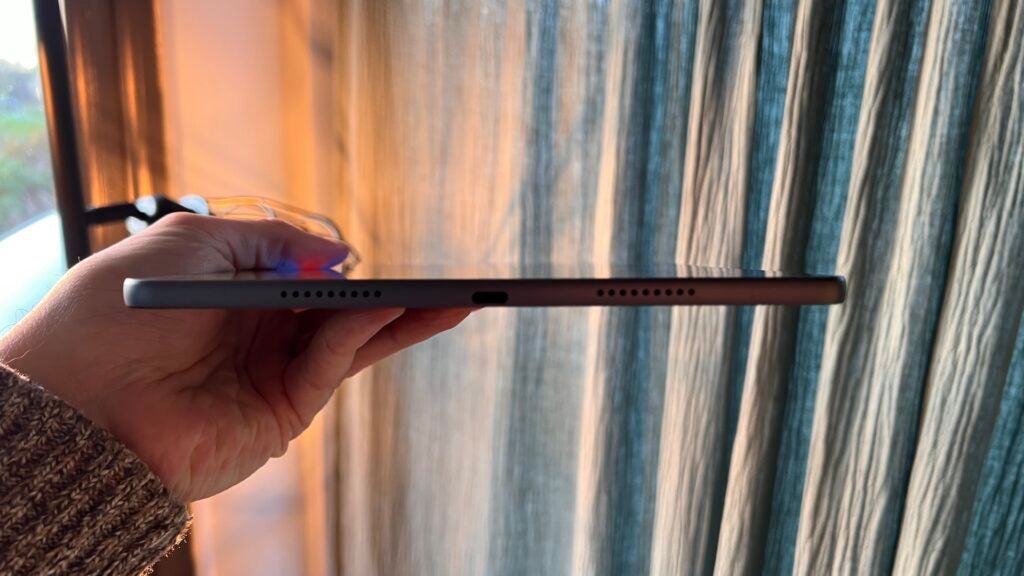
Playing an HDR video at 50% brightness for an hour brought the battery from 100% to 84%, meaning you should have enough juice to get through a full day should watching videos prove to be what you mostly use a tablet for.
Fast charging isn’t the strong suit of the tablet; it is limited to 18W, which stretches the definition of the term. A full recharge from zero took around 155 minutes.
Latest deals
Should you buy it?
You have issues with screen glare
The etching on the PaperMatte’s display makes it easier on the eyes than practically any other tablet at the price point.
You want the standard tablet experience
The Huawei Matepad 11.5 PaperMatte, lacking Google Play apps, isn’t as capable of much compared even to cheaper tablets.
Final Thoughts
Since it lost access to Android apps, Huawei has been backed into a corner. Through its hardware it has attempted to make a case for its devices, and with the MatePad PaperMatte, it has come upon something relatively unique.
That is to say it has a screen more similar to that of an e-reader, but without many of their refresh rate-related drawbacks. It is bright, vibrant and most importantly, gentle on the eyes, causing a lot less eye strain than its peers.
Beyond that, it has an inoffensive design, good speakers, strong battery life and fast performance, but much of this is for nought as the lack of apps once again comes to the fore. The simple fact is that a tablet half the price, of any stripe, will be able to accomplish more than the MatePad PaperMatte by simple virtue of access to the Google Play Store.
So, if you need a tablet that can help with eye strain, this is a great bet. For anyone else, an equivalent from Samsung, Xiaomi, or Apple will be a better option at the price.
How we test
Unlike other sites, we thoroughly test every product we review. We use industry-standard tests in order to compare features properly. We’ll always tell you what we find. We never, ever accept money to review a product. Tell us what you think – Send your emails to the Editor.
Used for a week before review
Benchmarked with industry-standard tools
FAQs
Yes, you’ll get an 18W charging brick in the box.
It’s compatible with the Huawei M-Pencil (second-gen), but it doesn’t come bundled in the box.





